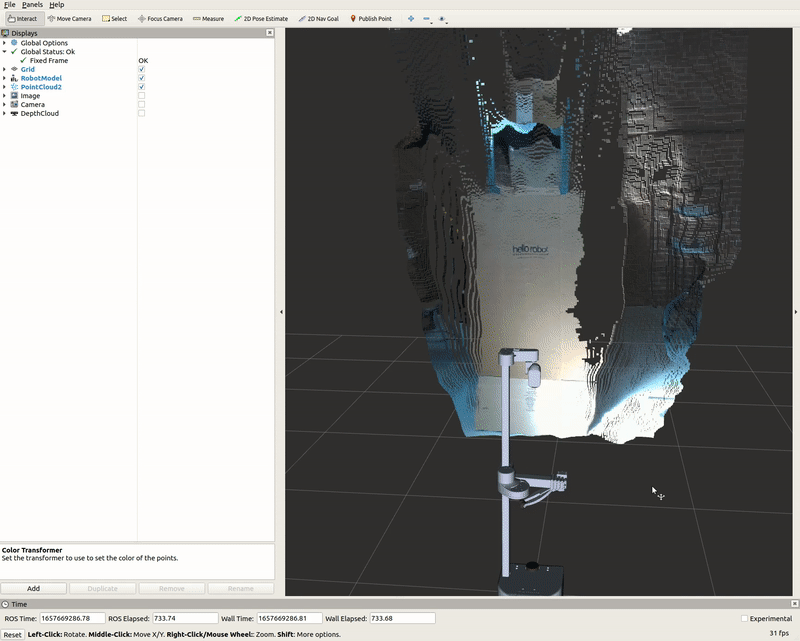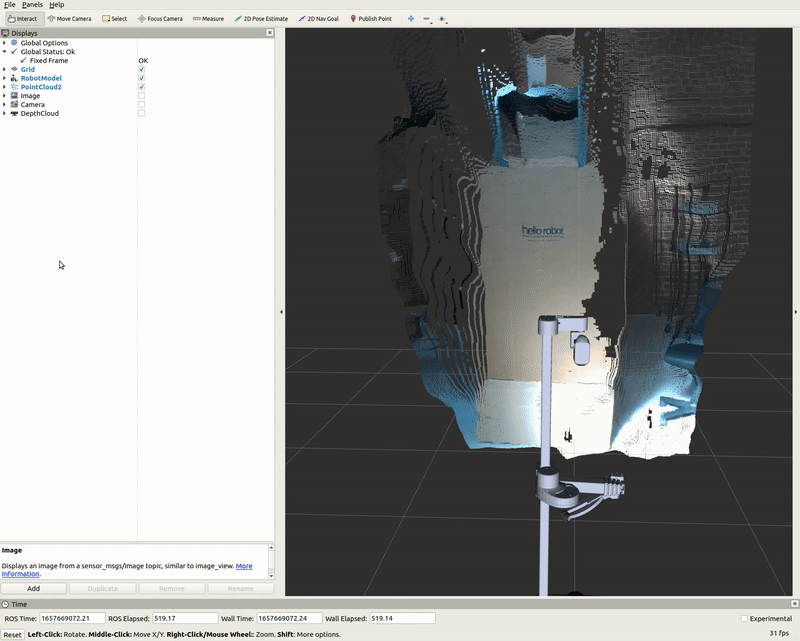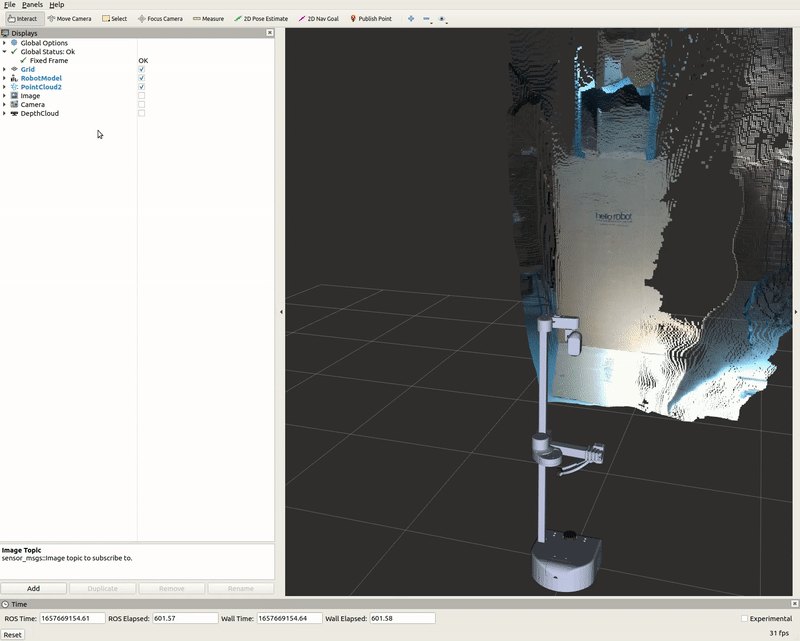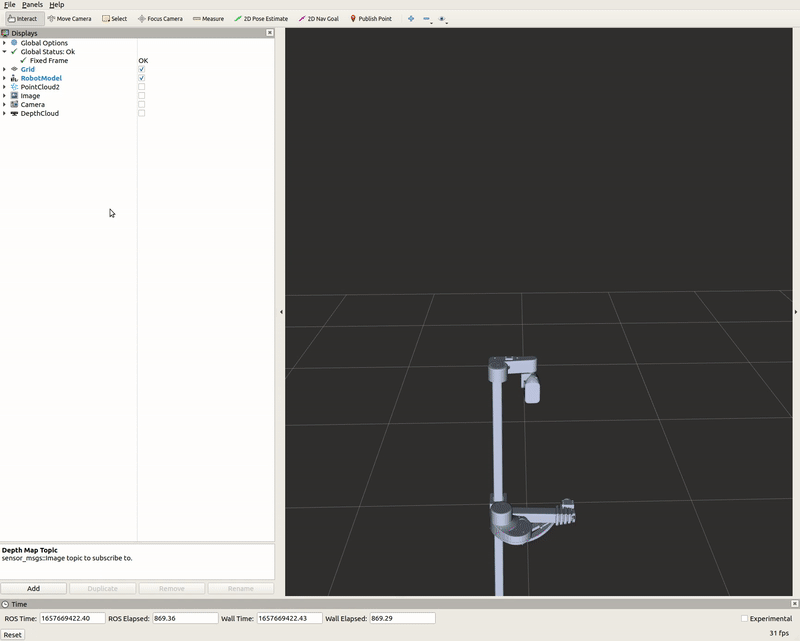3.3 KiB
Perception Introduction
The Stretch robot is equipped with the Intel RealSense D435i camera, an essential component that allows the robot to measure and analyze the world around it. In this tutorial, we are going to showcase how to visualize the various topics published by the camera.
Begin by running the stretch driver.launch file.
roslaunch stretch_core stretch_driver.launch
To activate the RealSense camera and publish topics to be visualized, run the following launch file in a new terminal.
roslaunch stretch_core d435i_low_resolution.launch
Within this tutorial package, there is an RViz config file with the topics for perception already in the Display tree. You can visualize these topics and the robot model by running the command below in a new terminal.
rosrun rviz rviz -d /home/hello-robot/catkin_ws/src/stretch_tutorials/rviz/perception_example.rviz
PointCloud2 Display
A list of displays on the left side of the interface can visualize the camera data. Each display has its properties and status that notify a user if topic messages are received.
For the PointCloud2 display, a sensor_msgs/pointCloud2 message named /camera/depth/color/points is received and the GIF below demonstrates the various display properties when visualizing the data.

Image Display
The Image display when toggled creates a new rendering window that visualizes a sensor_msgs/Image messaged, /camera/color/image_raw. This feature shows the image data from the camera; however, the image comes out sideways. Thus, you can select the /camera/color/image_raw_upright_view from the Image Topic options to get an upright view of the image.

Camera Display
The Camera display is similar to that of the Image display. In this setting, the rendering window also visualizes other displays, such as the PointCloud2, the RobotModel, and Grid Displays. The visibility property can toggle what displays you are interested in visualizing.

DepthCloud Display
The DepthCloud display is visualized in the main RViz window. This display takes in the depth image and RGB image provided by RealSense to visualize and register a point cloud.

Deep Perception
Hello Robot also has a ROS package that uses deep learning models for various detection demos. A link to the package is provided: stretch_deep_perception.
